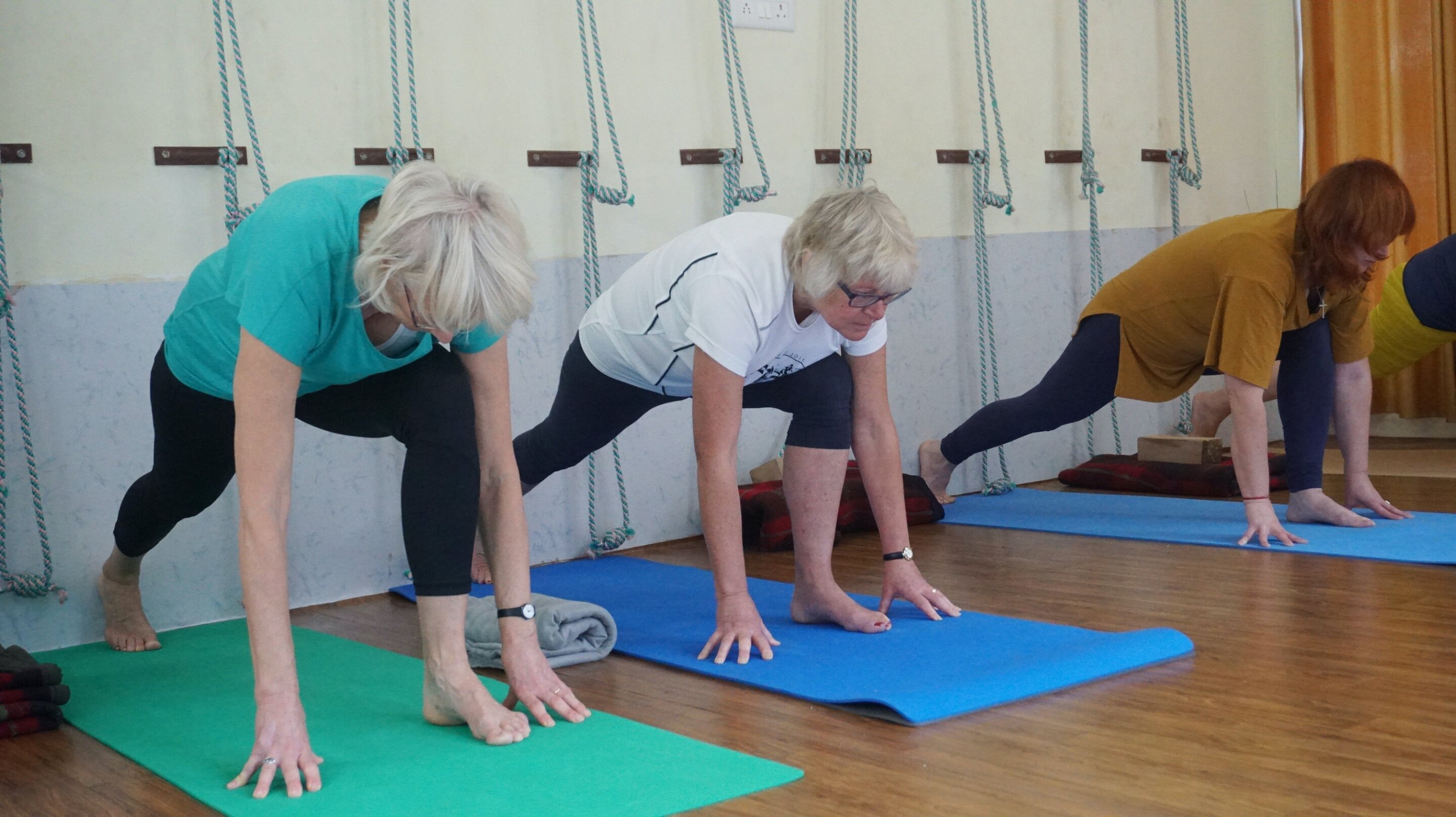× close
The Ageing On research team has shown that lower back pain in caregivers is significantly improved by a 12-week program of physical exercise
A study into professional caregivers of the elderly has revealed the importance of caregivers engaging in ongoing physical exercise, not only to reduce lower back pain, but also to improve psycho-affective aspects. The work is published in the Journal of Occupational Rehabilitation.
Several companies have started to implement the online program developed by the Ageing On research team.
Mainly older and middle-aged women, working class, with a very high prevalence of lower back pain and consequently possible psycho-affective problems and a poorer quality of life: This is the general profile of caregivers of the elderly. Who cares for the caregiver? This question or demand is not new in our society. Members of the Ageing On research group of the University of the Basque Country (UPV/EHU) asked themselves the following question: “How can we care for the caregivers?”
The Ageing On group develops, among other things, physical exercise programs to maintain the functional capacity of older people.
“But we realized that there was another group, the caregivers of the elderly who could benefit from the advantages of individualized physical exercise, as the prevalence of lower back pain among caregivers is very high and directly and negatively affects their well-being,” said researcher Ana Rodriguez-Larrad.
So for several years, interventions have been designed and evaluated to identify variables related to the well-being of this group and to make a difference for them. “We studied more than 200 caregivers to see what problems they had, where we could make a difference, what could be effective and what could not,” continued Rodriguez-Larrad.
Now, “we have piloted a program to relieve lower back pain among staff from six organizations,” explained the researcher Ander Espin-Elorza. “For twelve weeks, work was done as a team and at work involving simple strength exercises using body weight and resistance bands, and training in a progressive and personalized way with moderate intensity.”
At the end of the program, the researchers observed that the lower back pain of the staff had decreased.
“What is more, people who attended half of the planned sessions also experienced improvements in psycho-affective terms; the risk of depression declined, the use of hypnotic and anti-anxiety drugs decreased and the quality of life improved,” added Espín. However, in the tests conducted 48 weeks after the end of the program, it appears that the benefits regarding lower back pain had declined somewhat, which would indicate “the importance of ongoing physical exercise.”
In-company video call sessions
The research also validated a tool to assess, online, the physical fitness of the staff, and exercise programs were run via videoconference, as the research was conducted in the context of the COVID-19 pandemic.
“Conducting virtual and remote sessions may be beneficial, for example, in terms of the economic advantage or being able to conduct them during a pandemic, etc.,” explained Espin.
In addition, “these types of programs can also be extended to other types of caregivers, such as informal caregivers, and can also tackle other painful areas such as the shoulder, wrists, etc.,” said Rodriguez.
Researchers from the Ageing On group are continuing their research. Supervised physical exercise programs have a positive effect on the reduction of sick days per year, although this still needs to be investigated further.
“In addition to the benefits it can bring to workers’ well-being, the implementation of physical exercise enables better care to be given,” Rodriguez explained.
Some companies have already contacted the Ageing On research group to implement the program: “It provides a lot of freedom and the results are good,” they said.
More information:
Ander Espin et al, Videoconference-Supervised Group Exercise Reduces Low Back Pain in Eldercare Workers: Results from the ReViEEW Randomised Controlled Trial, Journal of Occupational Rehabilitation (2024). DOI: 10.1007/s10926-024-10182-2

